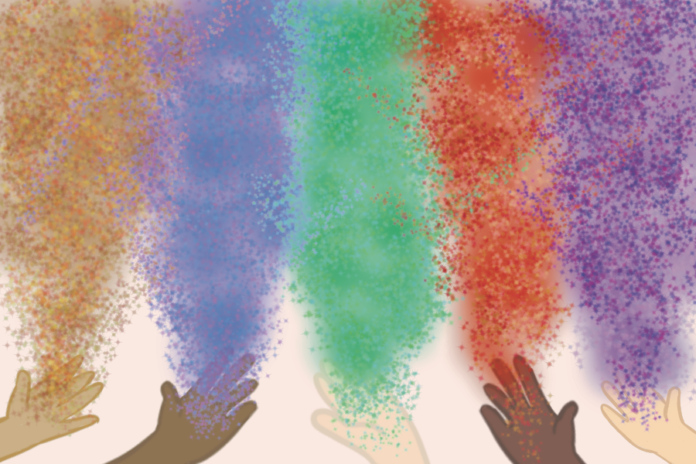The Hindu tradition is a way for everyone who celebrates to spread love
By RUMA POUDELL — arts@theaggie.org
Winter quarter finals are just around the corner, we’ve already begun registering for next quarter’s classes and the gloomy days of winter will soon be in the past — clearly, spring is approaching.
The beginning of spring, while technically marked by a specific date on the calendar, is also signified by different environmental markers which vary across cultures.
The Western, or Gregorian, calendar marks the start of spring based on when the hours of daylight in a given day surpasses the number of hours of darkness, a phenomenon called the vernal equinox.
In contrast, the Hindu calendar marks the start of the seasons by the full moons of the year. It recognizes the start of spring on the last day of Phalguna Purnima — Purnima meaning “full moon” and Phalguna being the name of a month on the Hindu calendar.
“Whatever quality you establish on a full moon, in our culture, it’s believed that [specific] quality becomes enhanced,” Keshav Sharma, an engineer in the Sacramento community, said.
Holi is a festival that marks the start of spring according to the Hindu calendar. This year, Holi, which features many rich traditions that are revisited this time each year, will be on March 8.
On the auspicious holiday, you will find community members chasing each other as they try to throw gulal, or colored powder, and light jets of water at each other. This is a part of Holi called Rangwali Holi. A fun way to highlight the colors of the festival and all of the colors that get on you as you participate in Rangwali Holi is to wear white clothes while this occurs. Throughout the celebration, bonfires are also lit, traditional folk songs are sung and people come together to dance and eat yummy sweets.
“It’s a holiday that feels like a game,” Smarika Neupane, a first-year student at American River College, said. “Everyone gets together, you’re throwing water balloons and it’s almost scary how intense it gets. In Nepal, the corridors would be filled with everyone running at each other.”
Religiously, these traditions hold significant weight as well. For example, the chaos of throwing gulal represents how love is like war. In the Vrindavan, the deities Radha and Krishna take opposing sides on this topic — despite being partners — to see whose love will ultimately conquer. The essence of Bhakti and Hinduism is just that — surrendering to love. Seeing devotees celebrate this tradition as they show love to each other is an offering to Krishna himself, as it spreads this message.
“Krishna used to play the flute and have everyone dance on Holi and the full moon because the experience is enhanced and carried throughout the season,” Keshav said.
Holi is predominantly celebrated in the South Asian countries of Nepal and India. However, you don’t need to be of South Asian descent or practice Hinduism to celebrate. According to Vir Khanna, a second-year computer science major at UC Davis, the festival is a celebration of love, regardless of where you are from.
“For me, Holi has been some of the most fun parts of my childhood looking back — and if anyone wants to join in on that and have a lot of fun, they should be allowed to,” Khanna said.
If you want to join in on the fun, there is a Holi celebration happening here in Davis courtesy of Project Rishi and the campus’s Indian Student Association. Join your friends on the Hutchinson Intermural Field on March 4 from 11:00 a.m. to 4:00 p.m. for food, dancing and more.
Written by: Ruma Poudell — arts@theaggie.org




